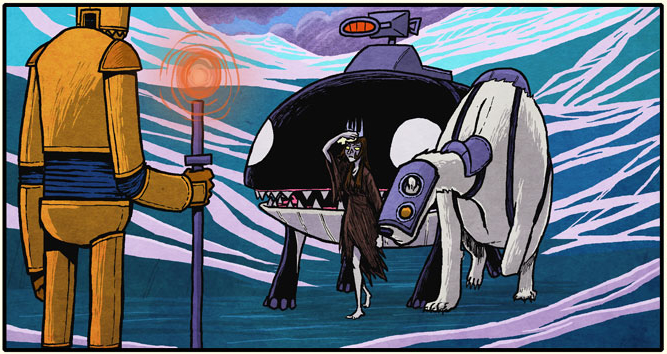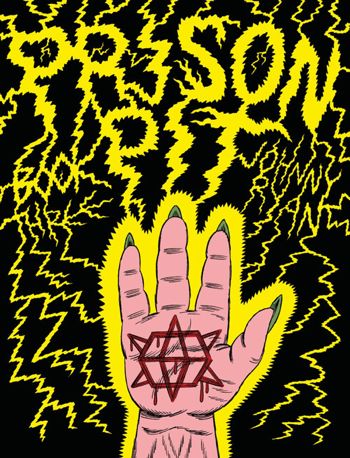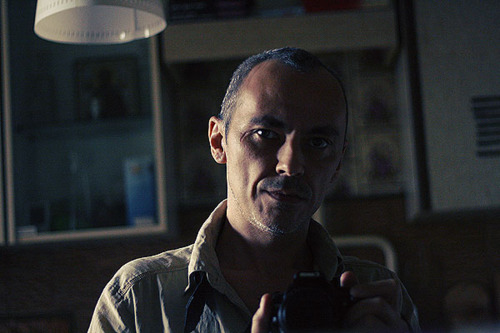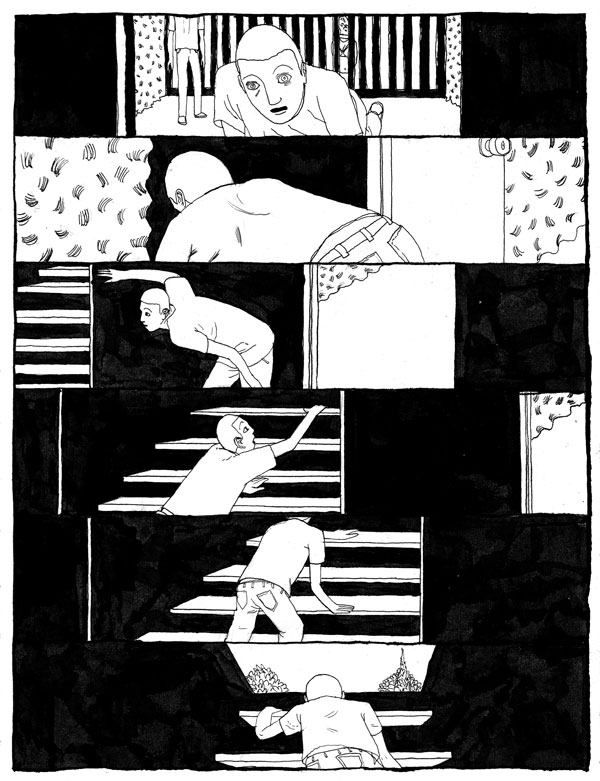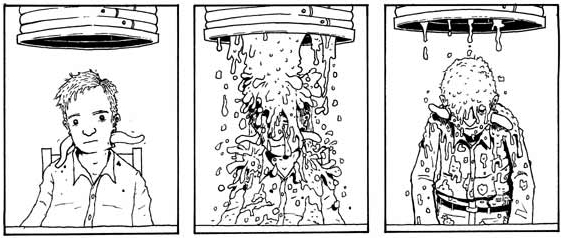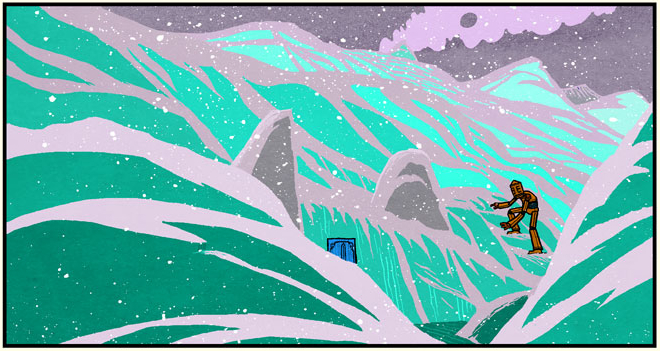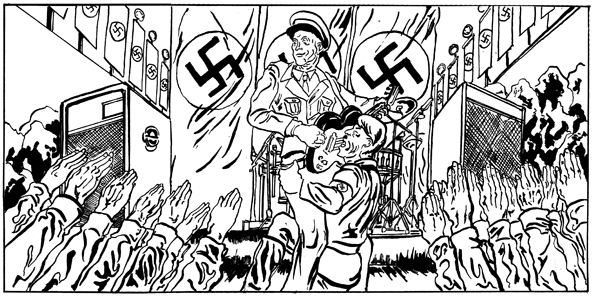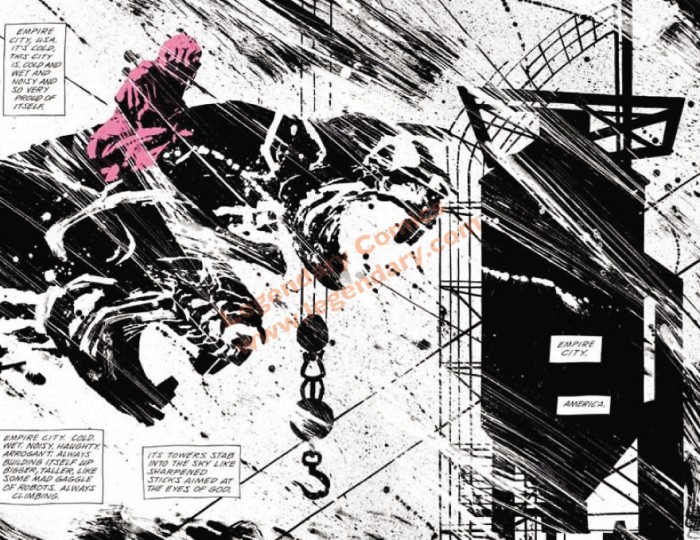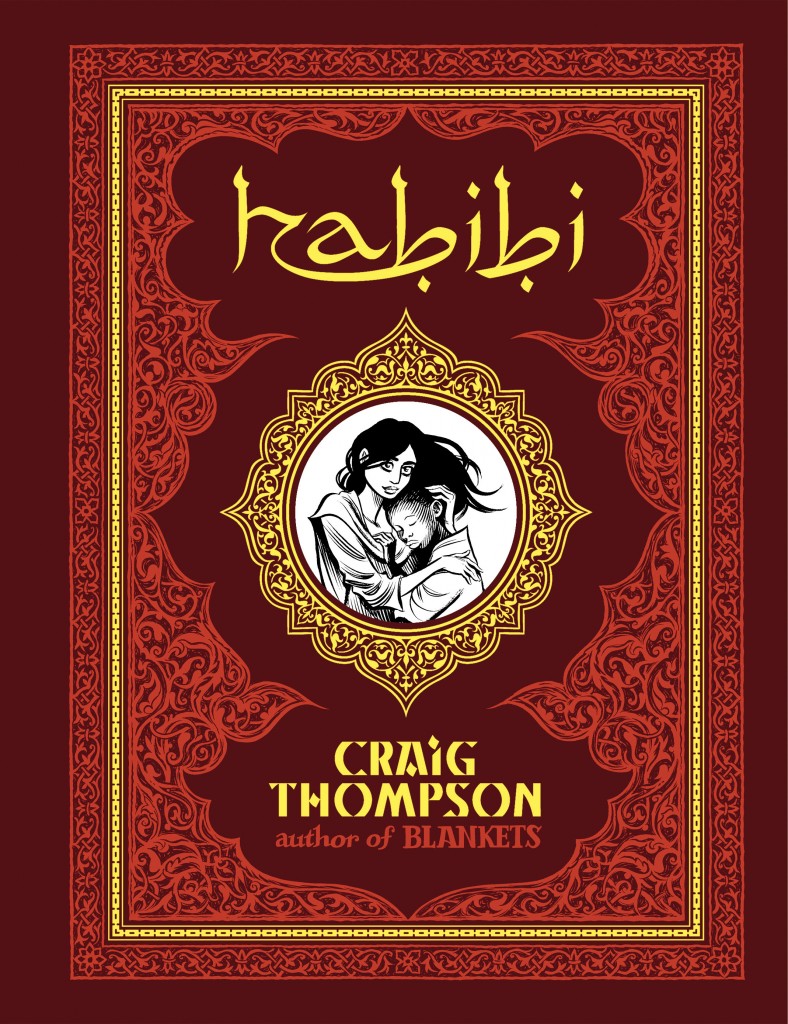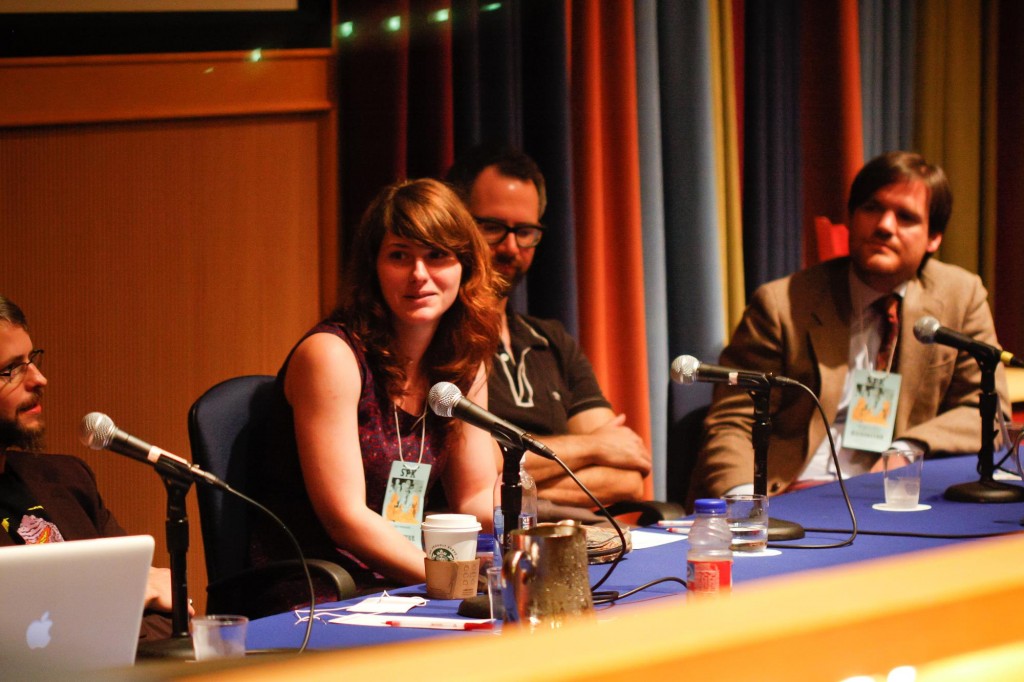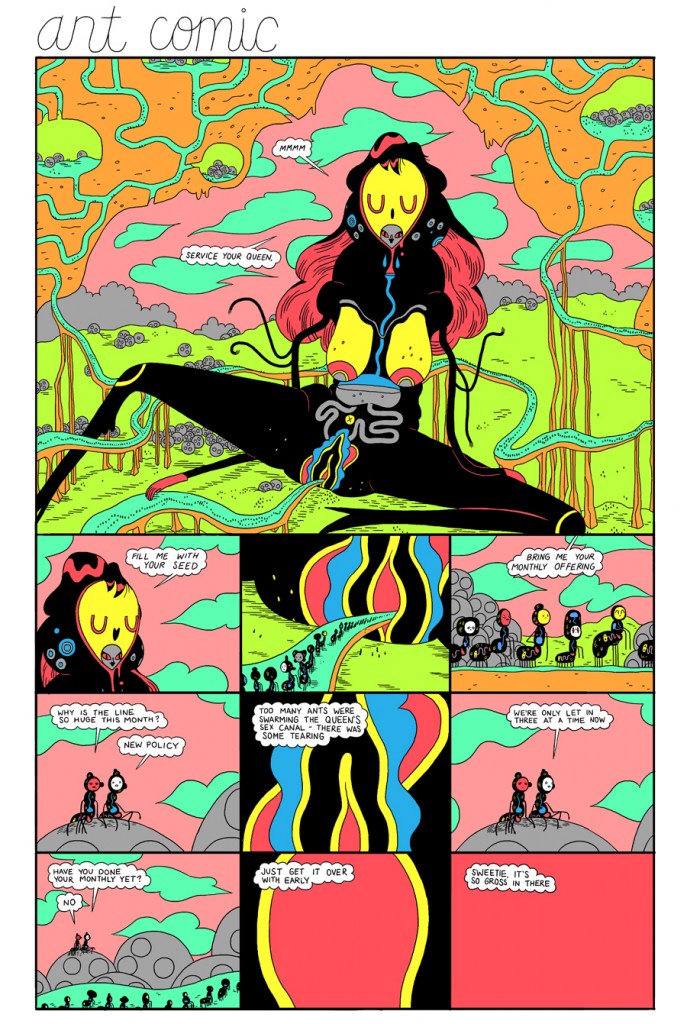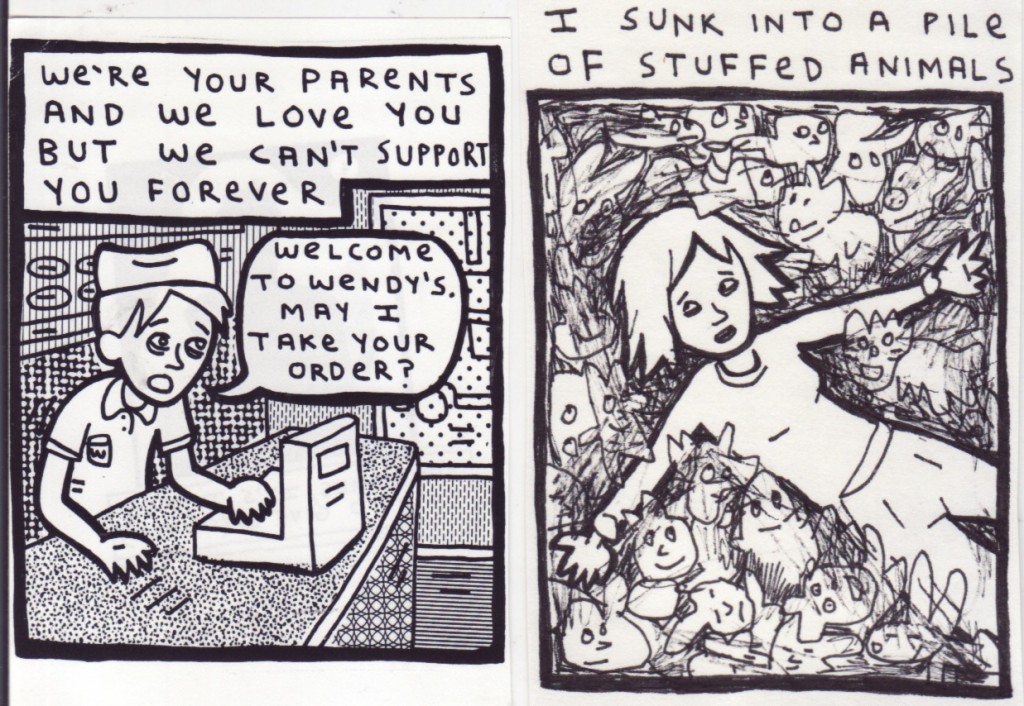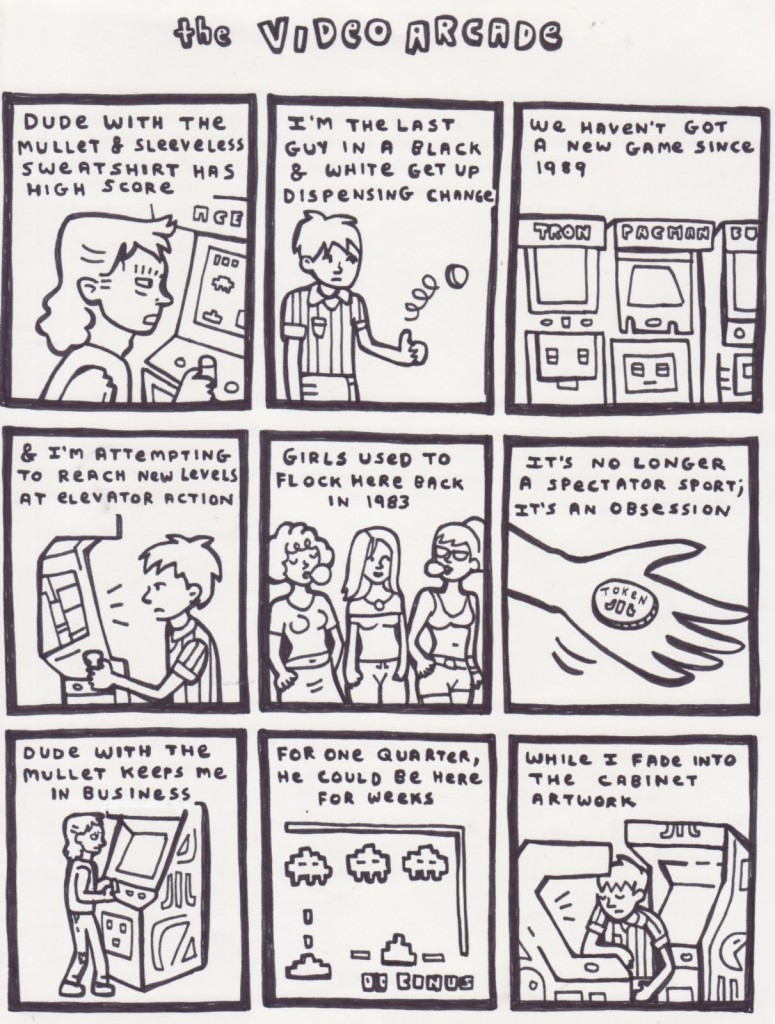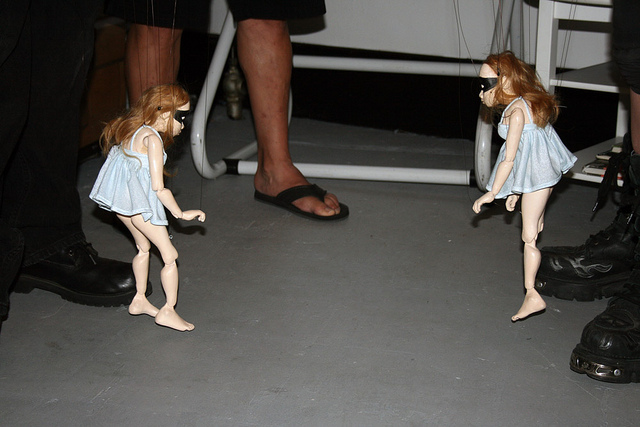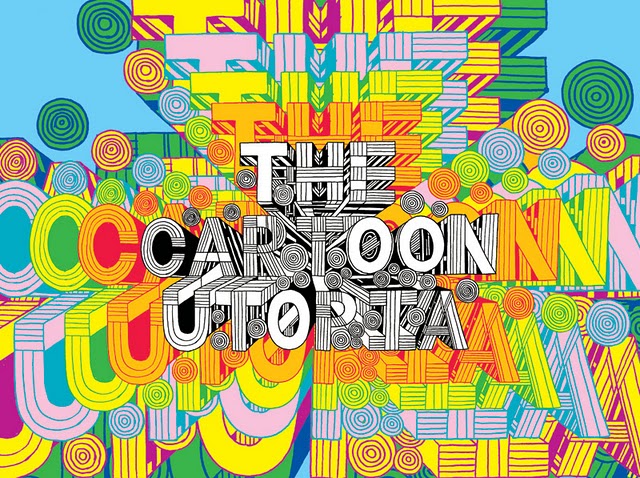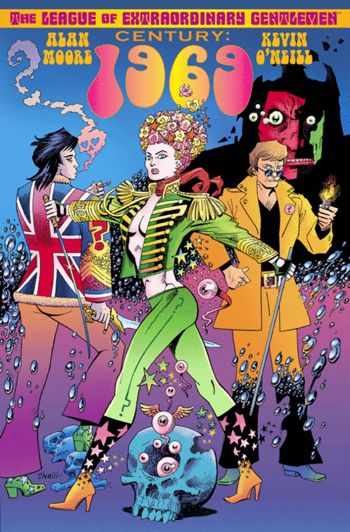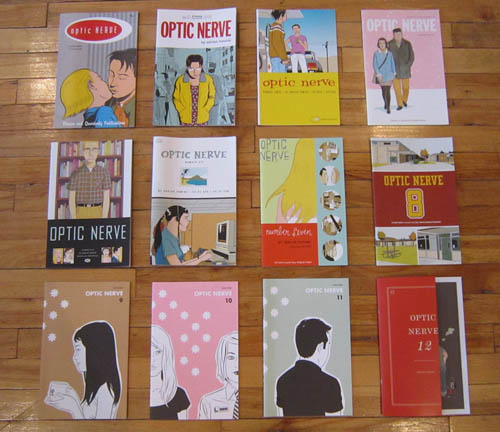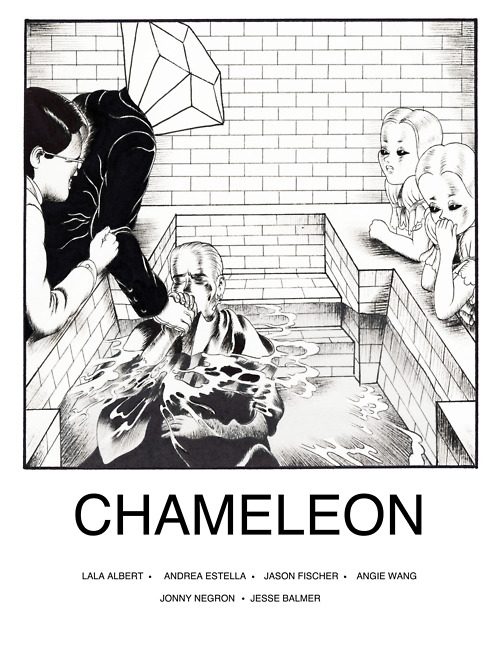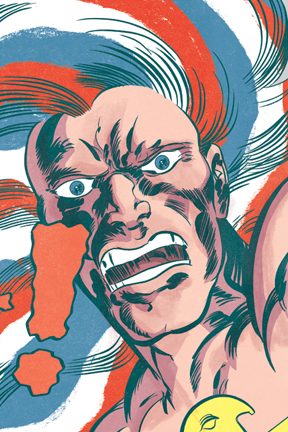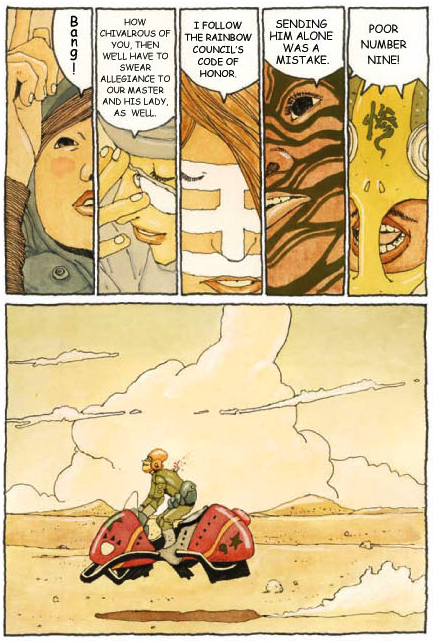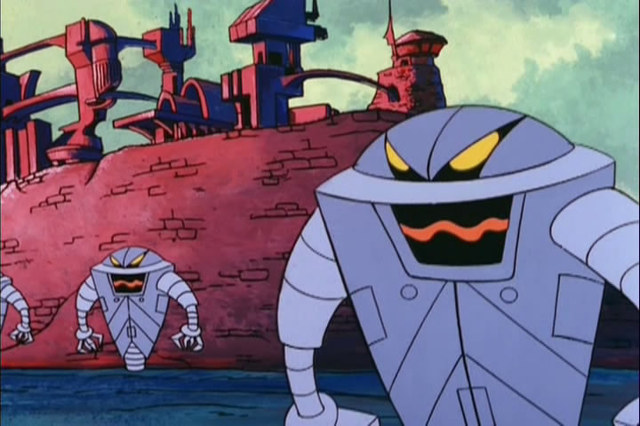Archive for September 30, 2011
More Mad Men thoughts
September 30, 2011* Last night, during my stint enjoying the hospitality of the Long Island Rail Road, I finished the first disc of Mad Men Season Two. With a little more than a full season under my belt, I find that I still don’t really relate to it on a competence-fantasy level — but what I do relate to is what Don Draper is so competent at. He’s a writer! A copywriter at that! I’ve now read and watched so many stories about people who murder other people for a living that watching people spend time trying to figure out the right turn of phrase for a headline feels bizarre. Bizarre, but good.
* The best part is that Mad Men nails the main pleasure of copywriting: Using creativity to solve a puzzle. Case in point: Don, Sal, and Peggy try to figure out the right tagline for their Mohawk Airlines ad. Don rejects the initial sexual-adventure angle he’d helped develop in their previous meeting, instead focusing on Sal’s background illustration of the traveler’s little daughter. On the spot, Peggy suggests a series of taglines reflecting this new direction, and she and Don tweak and reject them until she arrives at the magical “What did you bring me, Daddy?” She knows it’s right, Don knows it’s right, Sal knows it’s right. I know that sensation! I’ve gotten it myself during my dayjob writing copy for a bookseller, and during freelance gigs writing jacket copy for graphic novels, and in meetings at my old magazine jobs, coming up with coverlines. The thrill of recognition was palpable.
* Which leads to a surprising insight: Don’s work life is actually pretty good! I expected him to be embroiled in cutthroat office politics the entire time, but at least up until this point, his work-related problems are actually personal problems in work drag: his problematic relationship with his client Rachel Mencken; an unexpected intel coup by his envious underling Pete Campbell; a quickly avenged and forgotten pass at his wife by Roger Sterling. Those events aside, Don has a creatively and financially fulfilling job. He has the full support of his superiors; even the one time that Cooper gainsays him by insisting they keep Campbell, Sterling immediately steps into the breach to safeguard Don’s authority in Campbell’s eyes. He has the nearly worshipful admiration of everyone at the office, from his bosses (who are also his friends) to his employees (including Pete, his own protestations to the contrary). He’s good enough at his job to actually deserve that admiration, moreover. He wants a raise, he gets it. He wants to make partner, he gets it. In fact, hiring Duck Phillips and discovering that he disagrees with the decisions Duck’s making in his old job is the first time Don goes up against anything resembling a structural problem with his job. No wonder he’s sacrificed or marginalized so much outside of the office.
* Peggy’s arc is a lot more disheartening than Don’s, because it entails her becoming a worse person as a function of getting better at her job. I’d be lying if I told you that my own recent experiences with miscarriage, premature birth, and fatherhood didn’t color my perception of her decision to reject her baby. Simply put, that scene made me cry at my desk. (It’s been tempered somewhat by the revelation that she handled her I Didn’t Know I Was Pregnant moment badly enough to be classified as mentally ill and/or maternally unfit by the state.) But it’s not just what she’s done about her baby. I watched in something approaching horror as she dismantled the pretty young voice actress she cast in the commercial for the weight-loss vibrator thingamajig, thinking that she was harping on a perceived lack of confidence to compensate for her own — but this blossomed into full-blown horror when I realized she did this on purpose so that she could ingratiate herself with the unctuously macho Kenneth Cosgrove by providing him with easy pickings, breaking the actress apart so he could sweep in and reassemble her around his dick. Peggy appears to have learned what it seems a lot of viewers don’t learn from Don and company’s behavior, which is that you can’t separate the competence fantasy from the competence nightmare.
* Don’s most profound violation of Betty’s trust was neither his many affairs, nor his lies about his name and background. It was his collusion with her psychotherapist. I’m not really sure if what I’m about to say truly squares with the reality of these situations, but I can’t help but feel that both his adultery and his identity are matters of withholding himself from Betty. These are areas of his life he has chosen not to share with her. But by violating her privacy in therapy, he’s actively invading those areas she chooses to keep from him in turn — socially sanctioned areas at that, unlike his own. It’s vile. And when I realized that his purloined phone bill would reveal not phone calls to mistresses (he was always pretty careful about that) but phone calls to the doctor, I gasped.
* Betty handled it differently than I thought she might, by the way. I think I expected a “press a button and she falls apart” physical collapse akin to — well, I won’t say, but another prominent drama involving a husband who cheated on his wife, when the wife was finally confronted with this in a way she couldn’t avoid. Instead, in true Draper fashion, she shrewdly uses her knowledge to voice her concerns and suspicions about Don’s infidelity, knowing that either a) the doctor wouldn’t dare tell Don about this, thus preserving her privacy, or b) the doctor would tell Don about this, thus starting a conversation she couldn’t bring herself to start on her own.
* But first she breaks down and cries and confides to a nine-year-old boy. I found her two interactions with her divorced neighbor’s sad little kid enormously affecting. The first, in which the kid busts in on her while she’s peeing and she subsequently gives him a lock of her hair, was like the fulfillment of every young boy’s first pre-sexual kindling of the erotic impulse. That’s a topic I don’t think I’ve ever seen addressed, except in cheesy Franco-Italian sexual-awakening movies about sultry brunettes who turn their little villages upside-down. But it was also enormously revealing of how desperate Betty was for sexual and romantic validation, and how little emotional sustenance her friends, husband, and work as a homemaker and mother were providing her. That second parking-lot interaction was all of that writ large, with the bonus violation of the era’s rigid insistence on the sacredness of childhood. She forced the kid to be an adult — in a tender and sad and empathetic way, so much so that even the kid realized this person needed taking care of, but yeah, that’s what she did. It was brilliantly written, and frankly January Jones, whatever her faults elsewhere, couldn’t be more ideal as this porcelain-doll wifebot who occasionally cracks in profound and dangerous ways.
* Back to Don for a moment: My favorite part of the slow-burning Dick Whitman reveal came before you even knew it was a reveal. It was the first time we ever heard the name “Dick Whitman,” when a fellow commuter bumped into Don on the train and used this unfamiliar name. For the entire conversation, I thought that this guy simply had it wrong, that it was a case of mistaken identity, that Don was rolling with it because doing so was easier than correcting him, that a point was being made about Don as an unperson, a meticulously constructed generic man-shaped void. And I think those last couple of points still stand, regardless. What an eerie, haunting little scene.
* Another detail I enjoyed: Don and Pete’s on-again, off-again, bonafide camaraderie — the camaraderie of enemies. In the course of my life, from grade school till now, I’ve had, I dunno, half a dozen dudes (always dudes) who’ve actively sought to hurt me and/or were out to get me in some way. In all cases this weird affinity develops with them in a way that doesn’t exist with more run-of-the-mill critics or unpleasant acquaintances. You get to know someone you hate, and when you get to know them, a closeness develops whether you want it to or not. In one case in my own life, a guy I almost came to blows with once in high school (unbeknownst to me — our mutual friends kept him away from me) literally did the look-back-on-it-and-laugh thing a year later, when we became friends in college. We wouldn’t have gotten there if we hadn’t started someplace else. So I totally buy the seemingly genuine concern, respect, and pleasantness that breaks out between Don and Pete every now and then. As Bert Cooper told Don, one never knows how loyalty is born.
* A couple of quick notes on two key supporting players. You’ll note that when I did a quick list of actors on this show who are easy on the eyes, I didn’t mention John Slattery as Roger Sterling. I dunno, there was something slightly avian and predatory in his sharp gray features. But Jesus can that guy talk. Hand me a mic and a phonebook, for real. What great casting, to make him the guy for whom bon mots are a way of life. He’s a juggernaut of verbal charm. The most troubling thing about his move on Betty Draper or his attempted twincest threeway on the night of his heart attack wasn’t the morality of the deeds, but how clumsy he was in suggesting them. That’s how you knew something was wrong. That’s sharp writing.
* Watching these DVDs was my first-ever glimpse of Christina Hendricks in a noncleavagecentric capacity. If you’ve only ever known of her in the context of your suspicion that Tumblr was developed as a slightly inefficient Christina Hendricks photo delivery mechanism, watching her act — specifically, watching her play Joan Holloway, who is herself a ruthlessly efficient Joan Holloway delivery mechanism — is a revelation. That’s a part that could be very one-note and very dull in someone else’s hands, but Hendricks brings the character to her own tenaciously curated form of life. Always you see the effort behind the effortlessness, but just a little of it, just enough to prevent her from lapsing into caricature on either side of the line. Hendricks makes “making ‘making it look easy’ look hard” look easy.
I blame the Republican Party for my awful commute last night
September 30, 2011Lightning struck near one of the main hubs of the Long Island Rail Road last night during rush hour, which means that a commute that usually lasts from about 5:15 to 6:30 desk-to-door took me until about 10:50 instead. I’m positive that LIRR decision-makers made a lot of awful decisions during this process and all year round, but it’s not them I’m really angry at, because they’re not responsible for the philosophical underpinnings of why they don’t have the money that would have been required to prevent this from happening in the first place, where individual bad decisions wouldn’t matter as much as they did and do because the whole operation would be better on a structural level. And here is my rant on this topic.
I’m actually a lot better off than most people because I work in One Penn Plaza, the skyscraper on top of the LIRR commuter destination Penn Station. I don’t even need to go outside to get to the trains — there’s an entrance to Penn right from my building. Thus I have a journey of about three minutes from desk to train platform, unlike people who have to worry about walking and subways and such from elsewhere in town. So I heard the train was suspended at about 5pm, where normally I’d leave my desk at about 5:15 to catch a 5:23 home. So I just hung out for a while. Around 6:10 a fellow stranded coworker told me that they’d announced on the LIRR website that service should be resuming in about 15 minutes, so I went downstairs to Penn to check out the big board of departure times over the police barricades (they weren’t letting anyone else into the LIRR area). It said the next train to my stop was at 6:53, which I figured could be a reasonable estimate rather than just some number that went up automatically. So I bought some baby stuff in the Duane Reade down there and came back out to wait. At about 6:25 or so they threw some trains up on the board, then took them down about five seconds later, then put a few back up again. AT 6:29 they announced a 6:21 train on which my stop was the second stop. I hopped on, got a great aisle seat right next to the bathroom, fired up my Mad Men Season Two Disc One DVD, and away we went…
Fast forward to TWO FUCKING HOURS LATER, spent mostly parked in various locations, when we FINALLY arrive in fucking JAMAICA, which is usually not even the fucking HALFWAY POINT of my commute. Our train can’t even fully platform, because the train ahead of us hasn’t fully left the platform yet. After another half an hour of sitting around, they open the doors to the cars that are on the platform so people can get out and walk around, at which point the platform PA announces that service has been suspended again. After about another half hour of hesitation and bathroom-line-waiting, I decide to take my chances with taking a cab home from Jamaica after hearing a new announcement that they’ve completely powered down the tracks because people have gotten out of trains stranded on them and are walking around down there, which is basically a sign that nothing will move for hours and hours. But when I get to the street I discover that about 10,000 other people had this same idea. Asking my wife to come pick me up would be stupid because she’d have to bring the baby, and I’m guessing it’d take her half an hour just to get NEAR Jamaica Station at that point, since all the streets around are crowded with stranded commuters, horrendously inconvenienced locals, cars, cops, cop cars, buses, ambulances, barricades, taxis and gypsy cabs trying to score fares, significant others and car services trying to pick people up, etc etc, and I can just imagine the baby deciding she doesn’t want to be in the car anymore at that point and spending the next hour or so screaming. So I’m debating what to do–do I take the E back to Penn and sleep at the office? Do I take it someplace else in Queens and try to get a cab from wherever that is? Do I call one of my city slicker friends and try to get a place to crash? Then I look up and see I’m about two feet away from a bus stop for a route that goes to Floral Park, about a five minute drive away from where my mom lives. So I get on the bus and give her a call, and once I reach the end of the line she picks me up and drives me home. I walked in the door approximately four and a half hours after I normally get home.
FUCK THE LONG ISLAND RAIL ROAD, but more pertinently, FUCK THE REPUBLICAN PARTY from Ronald Reagan onward for deliberately refusing to invest in this nation’s vital infrastructure, because their primary goal is to take money from poor people and give it to rich people, and the means to that end is to completely delegitimize government as a solution for social problems since solving social problems costs money that could otherwise be handed to rich people, and the best way to delegitimize government is to make sure everyone’s interaction with any government or quasi-government agency is unpleasant and failed so that people think “government is the problem,” and the best way to do that is to refuse to fund vital services from public education to mass transit and transportation infrastructure because they are most people’s main daily interface with government power.
Soothe the savage beasts
September 30, 2011Comics Time: Prison Pit: Book Three
September 28, 2011Prison Pit: Book Three
Johnny Ryan, writer/artist
Fantagraphics, September 2011
120 pages
$12.99
Buy it from Fantagraphics
Buy it from Amazon.com
For today’s Comics Time review, please visit The Comics Journal.
Boardwalk Empire thoughts
September 26, 2011Matt Zoller Seitz explains what’s wrong with Terence Winter’s sumptuous but slightly shaky Boardwalk Empire, which returned last night. I appear to enjoy the series a lot more than Seitz does, although I agree with him that it hasn’t hit the heights of the likes of Deadwood or The Sopranos. But vanishingly few shows in the history of television have, after all. If Boardwalk Empire was the worst we could do, we’d be doing pretty damn great, which Seitz has no problem saying.
Seitz’s complaint is that despite being exquisitely dressed, shot, and acted, the show writes character in a comparatively perfunctory and haphazard way, especially compared to the evident glee it takes in delivering gangster genre goodies. In other words, his critique is the mirror image of my circa-Season-One-finale praise, which is that (unlike The Walking Dead) it takes genre stuff I’m predisposed to like (which The Walking Dead has) and surrounds it with lusciously pleasurable filmmaking on other levels (which The Walking Dead doesn’t have). That it has a hard time going further than that — that the writing is inconsistent enough (cf. my complaint about Margaret’s yo-yo morality) to prevent it from getting there — is Seitz’s beef.
The thing is, though, that I do think it has greatness in it. Richard Harrow’s explanation of why he doesn’t read anymore, for example, is maybe my favorite line in television history. “It occurred to me the basis of fiction is that people have some sort of connection with each other. But they don’t.” That is the most brutally bleak thing any TV character who isn’t Livia Soprano or BOB has ever said in my hearing. What makes it even more vicious is that it’s an indictment of the very enterprise its writer was engaged in at that moment. This is followed by a scene in which an unusually empathetic Jimmy Darmody takes Richard back to Johnny Torio’s brothel to relax, at which point some small talk about Jimmy’s piece gradually becomes, to the viewer’s dawning horror, a litany of the arsenal possessed by Harrow, a man who has just professed feeling no connection to the rest of humanity whatsoever. Here’s an example where not only is there brilliant, philosophically minded character work being done, but it actually enhances the bloody, scary gangster stuff in the process.
Harrow is, I think, the emblematic figure for what I believe to be the theme of the show, a theme Seitz hasn’t been able to put his finger on, which is that violence, in war and elsewhere, is just run-of-the-mill corruption and shittiness with its mask off. The Great War that made monsters of Harrow and Jimmy also provided Al Capone with a readymade backstory for why he’s the tough customer he’s made himself out to be, and is used by the Colonel as a justification for the sneak-attack slaughter of a warehouse full of black people, and is echoed in the sectarian strife of Ireland that pops up here and there among Nucky Thompson’s Hibernian politician pals, and on and on and on. If The Sopranos is about how people will choose to do the wrong thing if it’s easy enough, and Deadwood is about the price of doing the right thing anyway, Boardwalk Empire is about the pervasiveness of the wrong thing, so that you’re all but locked into supporting it in one way or another. In his essay, Seitz wonders what Jimmy Darmody’s motivation is — I think it’s your basic post-Great War Lost Generation nihilism. Why constantly bite the hand that feeds? Why not?
Again, Seitz is absolutely right to say that the inconsistent character work muddies the waters. The kindness in Nucky that Margaret saw in Season One and which separated him distinctly from Tony Soprano and Al Swearengen is a lot tougher to detect when he’s complicit in the Ku Klux Klan’s hatecrimes. And Harrow’s bracingly direct expression of human disconnect doesn’t jibe with his now apparent obsession with idealized family life. But somewhere in here there’s a statement about the enormity of man’s inhumanity to man that’s fixing to be made. As long as the show continues to be so pleasant to watch as it meanders its way in that direction, I’ll meander with it.
Carnival of souls: Johnny Ryan, Geoff Grogan, Justice League, more
September 26, 2011* Jesse Pearson’s interview with Johnny Ryan for The Comics Journal is tremendous, by far the most extensive and revealing I’ve ever read with the artist. I feel like it solves the Johnny Ryan mystery. I discuss why over at Robot 6.
* Also at Robot 6: Tim O’Shea talks to Michael Kupperman about Mark Twain’s Autobiography 1910-2010.
* Geoff Grogan has relaunched his website. He’ll be serializing his excellent comics Look Out! Monsters and Fandancer there, as well as reformatting his old comic Dr. Speck and launching some new projects as well.
* Tom Spurgeon on Jaime Hernandez’s Love and Rockets: New Stories #4, Ethan Rilly’s Pope Hats #2, and Jacques Tardi and Jean-Patrick Manchette’s Like a Sniper Lining Up His Shot.
* Looks like Uno Moralez is joining Jack Kirby, Paul Pope, Sergio Aragones, and Stan Sakai in the fraternity of non-autobiographical cartoonists who nonetheless look like they could have stepped out of one of their own comics.
* Man, that’s a lot of airtime to fill with variations on “Well, that wasn’t very good.”
* Ken Parille and Brian Chippendale explain what’s wrong with Justice League #1. That’s the previously deleted Chippendale post on the topic, revived and expanded, by the way. And do stay tuned for a delightful comment thread on Parille’s post. Personally, I think that a last-page reveal/cliffhanger predicated on wondering whether Superman is Batman and Green Lantern’s friend or foe in a series called Justice League with Superman side by side with Batman and Green Lantern in a portrait of the previously announced League line-up on the cover is indicative of the situation here.
* Jonny Negron remains wonderful/keeps my blog NSFW almost singlehandedly.
* If you have not yet been introduced to the joys of Kevin Fanning, allow me.
Cage Variations
September 26, 2011Comics Time: “Touch Sensitive”
September 23, 2011“Touch Sensitive”
Chris Ware, writer/artist
McSweeney’s, September 2011
14 pages
99¢ (in-app only)
Download the free McSweeney’s iPad app, then purchase it in the app’s store
For today’s Comics Time review, please visit The Comics Journal.
Two announcements about my comics
September 22, 2011I am currently looking for artists for four comics projects. One is long, sleazy, and violent. One is long, sad, and violent. One is short, sad, and violent. One is short, sad, and not violent. If you are interested in working with me on any of these, please drop me a line in the comments or using the contact information available at this link.
I have also spruced up my Comics page, which contains links to all of my currently published comics. (This includes “Destructor and the Lady,” which is still in progress; it doesn’t include “The Amazing Spider-Man in…The Hundred-Story Hunt,” which goes on sale in Spider-Man #19 on October 26.) Please take a look and read some comics. Perhaps they’ll whet your appetite for working with me. Here are some images from them:
Carnival of souls: Frank Miller, Chris Ware, comment-thread discussions, more
September 22, 2011* Some lovely preview pages from Frank Miller’s Holy Terror are going around. (Via Marc-Oliver Frisch.)
* Chris Ware has a new iPad-only comic out. More about this anon.
* Here’s a nice piece by Zom of the Mindless Ones on the end of Twin Peaks.
* George R.R. Martin on early Marvel superhero comics — what made them different, how they influenced him.
* The comment threads for my recent Habibi and Mad Men posts are proving unusually fecund. Check ’em out and talk about Orientalism, competence fantasies, male beauty, and more!
* And hey, how about that Hellen Jo?
Mad Men thoughts
September 21, 2011In a cosmic coincidence, just days before Netflix announced that it was doubling its rates and renaming itself “Poops Deluxe,” I finally started watching the Mad Men discs I’d had out probably for the duration of wife’s pregnancy and our child’s first six months of life. Guess what? It’s a good show! I have the following spoiler-free thoughts about it in particular after watching the first four episodes:
1. Whoever cast this thing deserves a Congressional Medal of Honor. Jon Hamm is an enormously pleasant man to look at for an hour at a time. He’s like the human equivalent of Craig Thompson’s drawing: No matter how daunting the size of the undertaking, on a visual level it’s just like, “Hey, this’ll be nice.” And supporting players from Christina Hendricks to Bryan Batt are similarly enjoyable to look at for various reasons.
2. There was a twist in one episode involving a firm decision Don made, the kind you really can’t back down from, being undone by forces beyond his control, and I sat there watching it unfold thinking “How is he going to recover from this mess?” Then another character swooped in and fixed it for him by doing something I never in a million years would have thought to do, either as the character or as the writer. That impressed the hell out of me. Writing that’s smarter than you are is a rare gift, frankly.
3. Tom Spurgeon has this thing about contemporary superhero comics being, basically, competence fantasies. The reason all the characters have gradually been powered up into unstoppable badasses is because that’s what the audience is identifying with. They don’t want to see challenges dealt with, they want to see challenges overcome. Nerd culture has a problem with this generally — I see it a lot in A Song of Ice and Fire fandom, where readers “stop liking” Character X when Character X fucks up or does something stupid or reckless or naive, as if doing so makes them less interesting or worth reading about. I watch a show like Mad Men — or The Sopranos, or Deadwood, or The Wire, or Battlestar Galactica, or even Lost, which as the nerd-culture-est of all those shows had to deal with this problem over and over again as they made Jack and Locke progressively less heroic/antiheroic and more unpleasant — and wonder how the fuck those kinds of people process someone like Don Draper. Do they just not watch? Or are these the sociopaths who watch this show and feel like it’s brought back early ’60s smart-haircuts-and-suits-and-cigarettes-and-scotch coolness again, ignoring that all those things are basically just the pointy tails and pitchforks adorning this particular hell on earth?
Comics Time: Habibi
September 20, 2011Habibi
Craig Thompson, writer/artist
Pantheon, September 2011
672 pages, hardcover
$35
Buy it from Amazon.com
Fifteen observations about Craig Thompson’s Habibi:
1. This is not a book about Islam. It’s not about any varieties of Islam — contemporary, ancient, fundamentalist, militant, or otherwise. It’s a book infused with Islamic art, culture, thought, and religious beliefs, certainly, but it’s not about Islam. This is another way of saying it’s not about 9/11, al Qaeda, Iraq, Afghanistan, Palestine, Iran, any specific Muslim countries, Muslims in America, uniquely Muslim varieties of misogyny, the Arab Spring, or any other contemporary news-story topic. I first talked to Thompson about his plans for Habibi in the summer of 2003, and in that context and over the course of many of the years to follow it was tough to think about the book without thinking of it one or more of these ways, but no, that’s not what it’s about.
2. This is a book that uses Islam to do other things. On a visual level, it gives Thompson a set of design elements, from calligraphy to ornamentation to architecture to dress to geometrical art, from which he can build a coherent visual world for his vaguely fantastical/post-apocalyptic/dystopian story. Not coincidentally these elements dovetail with his preexisting preoccupations as an artist, from swooping fabrics to obsessive-compulsive design filigrees to religious iconography.
3. It follows that the book is consciously, knowingly Orientalist, as you’d expect and hope of a book that’s using actual Islamic art as bricks in a fantasy world-building project. It’s got an Arabian Nights vibe. Thompson’s invoked Edward Said on this score and everything. To the extent that potentially problematic caricatures of Arab and African race are involved, and they are, they are at least consciously evoked.
4. Islam also provides Thompson with a back door into talking about religion and God — even recognizably Christian elements thereof, thanks to the presence in Islam of Jesus, Solomon, Abraham et al — without needing to rely on the brand of American evangelical Christianity in which he was immersed growing up and which he’s already explored in Blankets. At times the commonality between the issues he discusses in the two books is quite striking. For example, there’s a plotline here about how the bifurcation of Islam and Judaism/Christianity can be traced back to which son you believe Abraham was supposed to sacrifice, Isaac or Ishmael, that’s basically just Blankets‘ bit on scriptural malleability (“The Kingdom of God is within or around you”) blown up to world-historical scale. The impact of religious belief on the development of adolescent sexuality is a centerpiece of both books as well.
5. This is a book about sex. Even if there’s nothing in it that would earn the book anything more than an ‘R’ rating, it works through some violently ambiguous and conflicted feelings about sex in relatively explicit fashion. It took my wife reminding me that Craig first described the book as starring “a eunuch and a prostitute” to help me crystallize that, but there it is. And it makes sense, given the play-it-to-the-balcony tone of Thompson’s previous book, Blankets, and its autobiographical protagonist’s all-or-nothing approach to falling in love and making art, that this book would coalesce around those two poles as well. It is very frankly about the liberating and destructive power of both desire and the denial of desire. (To hearken back to the Arabian Nights element, here’s a tell: Instead of delighting the king with her stories for night after night under penalty of death, the central female character must delight him with sex.)
6. This is a book about many other issues that overlap with or orbit around sex in the popular imagination. They’re not sex, but they’re talked about in the same breath more often than not. They include rape, molestation, prostitution, pregnancy and childbirth, gender, misogyny, a panoply of queer identities, self-injury, puberty, motherhood, male-female friendships, sex and race, sex and organized religion, sex and spirituality, sacrifying sex/orientation/gender, masculinity and femininity…
7. The emotional and physical stakes for the characters are much higher than they are in any of Thompson’s previous works. This is established within the first few pages, in which a child is raped. A bloody sheet is held up to the child and the audience, the blood of her vagina on the blank white fabric equated with the letter-writing in Chunky Rice; the footprints on snow and drawings on paper of Blankets; the act of Creation itself — “From the Divine Pen fell the first drop of ink.” Violence and abuse are the lifeblood of the story.
8. Thompson’s art is much, much denser here than I’ve ever seen it before. It’s still lush and lovely on a surface level, his line still swoops and curves in a fashion he’s explicitly compared to handwriting, but there are more panels on the page, more black in the panels, few of the vast fields of white Blankets was known for, and few of its splash pages too. Decorative patterns of intricate detail are copied from Islamic texts by hand, and drawn repeatedly until they cover almost all the available space on a given page, also by hand. It’s a much tougher book for your eyes to breeze through.
9. Maybe the best way to symbolize that is in the new panorama Thompson has added to his repertoire. He’s said, and promotional art for the book has made use of the fact, that Good-Bye, Chunky Rice had the ocean, Blankets had the snow, and Habibi has the desert. That’s true, but Habibi heavily features vistas of another sprawling, enveloping sea: a man-made sea of garbage. It’s as dense and detailed and chaotic as the water, snow, and sand are unified and simplified.
10. The book is designed. Designed in the Watchmen symmetrical-issue sense. Each of its nine chapters corresponds to a box in the Islamic religious/mathematical talisman known as a magic square — a sort of spiritual sudoku — and its corresponding letter of the alphabet. Each corresponds to a specific topic, and a specific prophet of Islam used to illuminate that topic. But unlike Alan Moore, Thompson doesn’t foreground his machinations. This stuff is present, but in its way it’s beside the point. I didn’t even notice.
11. In much the same way that light, electricity, and information functioned as the stuff of life in Grant Morrison’s Final Crisis, fluid is the stuff of life here. Water is crucial to the various societal strata’s survival within the drought-stricken world of the story. Blood is crucial to nearly all of the book’s depictions of both sex and violence, the fuel of human physicality. Ink is crucial to the characters’ understanding of the nature of God and the world via holy texts and art, and to the author’s understanding of what the hell he’s been doing for the past eight years. There’s less semen or vaginal secretion than you’d think, but otherwise it’s a book about fluids, and fluidity. The greatest sin is staunching the flow, which is done in various ways — a metaphor that extends from environmentalism to art to, of course, spirituality and sexuality.
12. The relative lack of emphasis on sexual fluids is a leading indicator of where the book ultimately pulls an important punch. There’s a revelation, an exposure, toward the end of the book that we readers do not get to see. Since the book confronted virtually everything else it tackled so head-on, since it was so in-your-face about violence and sexuality, you really feel this revelation’s visual absence. Which is maybe appropriate, given what’s being revealed, I dunno. But it left me wondering “Why didn’t he show that?”, in a way that suggests it’s a misstep.
13. The book contains two of the toughest depictions of mental illness I’ve come across in comics. One in particular involved postpartum depression and was deeply sad to me. The other comes hot on the heels of the book’s single most unpleasant depiction of the cruel fate of children in this world. Actually, nearly everything involving children is rough stuff here. There’s not a lot of time for innocence.
14. The book contains two pretty rollicking action sequences. If you’ve read as many lousy action comics as I have, it ought to be a pretty great pleasure for you to watch an artist with Thompson’s attention to environment, layout, movement, and pacing choreograph chase scenes and fight scenes. It definitely was for me. And these sequences had the secondary function of release valve for the dense and emotionally oppressive material they helped break up.
15. Actually, the more I think about it, the more I think Habibi is a book of sequences. Maybe this is reinforced by Thompson’s non-linear storytelling, with his male and female leads’ stories shifting backward and forward in time independent of one another, a technique that emphasizes discreet sequences over the overall flow of the larger narrative. But the bathtub sequence (very successful), the dam sequence (this is perhaps the book’s climax, and I’m not sure it’s successful), the garbage man sequence, the childbirth sequence, the eunuchs sequence, the conflicting stories of Abraham’s aborted sacrifice — these are what stick out to me, embedded in the bigger picture. They’re what will draw me back into the book, moving backward and forward through the work of a cartoonist working out his personal obsessions on the grandest canvas imaginable.
Carnival of souls: Star Wars, Netflix, more
September 20, 2011* Rob Bricken explains why you may or may not want to buy the Star Wars blu-ray box set. He’s on the fence, but his comprehensive assessment of all the set’s features, pro and con, ought to give you enough information to make up your mind. For me it’s a clear no. I don’t begrudge George Lucas the opportunity to endlessly tinker with the world he created. The guy built an entire industry with his imagination, and owns the rights to all of it, a fate that has eluded almost all of his antecedents and very few of his descendants. I’d guess that getting to constantly refine and mess with what you’ve built has got to be unimaginably delightful. But speaking personally, I’m not interested in seeing the tinkering — I’m interested in seeing the versions of the films that made me like them in the first place. I’m certainly not interested in rewarding a series of decisions/revisions/additions/subtractions that have made them worse films.
* While we’re on the subject of customer-independent film-industry business decisions, I find yesterday’s letter of apology cum backdoor announcement of a major overhaul of his entire company from Netflix CEO Reed Hastings maybe the most uniquely bizarre such move I’ve ever seen. People like Endgadget’s Darren Murph and Slate’s Farhad Manjoo are probably right about the underlying strategy: a sort of preemptive amputation of the company’s beloved DVD direct-mail business model, prepping for its eventual destruction on the company’s terms rather than dealing with it over a prolonged period on the market’s terms. In this light, everything that looks stupid or awful about the announcement is a feature, not a bug: Using an attempt to staunch customer-base and stock bleeding caused by the company’s last poorly handled major change as an opportunity to announce an even more complicated and infuriating business model; slapping the newly spun-off DVD business with a ridiculous name, Qwikster, that sounds like a failed Internet startup from ten years ago; spending a significant chunk of time explaining how much more user-unfriendly the new set-up will be; maintaining a sad-sack hostage-tape demeanor throughout the entire affair. But to me this only makes sense if all the damage were completely contained within the customer base for the red-enveloped stepchild DVD business, and it obviously isn’t. The Netflix-proper streaming customers got this letter and marveled at its lugubriousness, prolixity, and lack of understanding of what “apology” means along with everyone else. Maybe some next-level business mind can explain to me why deliberately making yourself look bad and your company less useful for nearly all of your customers, publicly, twice in a row, is actually four-dimensional-chess checkmate, but I don’t see it. I can tell you that the only thing that stopped me from cancelling my Netflix/Qwikster account yesterday is feeling like I need to get a return on my investment in having rented the same two unwatched Mad Men discs for the duration of my wife’s pregnancy and our child’s subsequent first six months of life.
* Here’s a photo of Tom Neely, Lisa Hanawalt, Johnny Ryan, and Benjamin Marra from the SPX panel I hosted, “Excruciating Detail: Drawing the Grotesque.” They seem to have enjoyed it, which is nice. Both this and the Craig Thompson Habibi panel I moderated were filmed, so I’m hoping I’ll be able to link to the video soon.
* Frank Santoro will teach you comics by mail.
* S.H.O.O.T. First writer Justin Aclin once pointed out to me that the comics equivalent of Seinfeld‘s white-hot contempt for the elderly is Axe Cop‘s naked loathing of babies. In that light, the current Axe Cop storyline is the equivalent of any episode centered on Del Boca Vista or the Costanzas.
* Tom Spurgeon’s review of The Intrepids #6, a comic I haven’t read, also functions as a review of, really, the vast majority of superhero and superhero-ish comics today, many of which I have read. “Ruthlessly familiar” is just about right.
* This Adrian Tomine print is really really hot stuff. Sexiness has always been one of his comics’ secret weapons.
* Check out the colors in this Michael DeForge comic.
* Dave Kiersh keeps posting his old comics and art, which keep being one of the great hidden treasures in all of comics.
* Hans Rickheit made Cochlea and Eustacea puppets, which aren’t at all disturbing.
* Alisa Kiss as Red Sonja, photographed at Dragon*Con by Anna Fischer. “I just want you boys to see what you’re fighting for, that’s all.”
* It’s awful that anyone can have the last word on Dylan Williams, but if it has to be that way, let it be Tom Spurgeon.
Carnival of souls: L. Nichols, Dylan Williams, SPX, more
September 16, 2011* My latest Say Hello! column is up at The Comics Journal. This time I interviewed Jumbly Junkery‘s L. Nichols.
* I’ve collected some powerful tributes to Dylan Williams over at Robot 6.
* I’m pretty bummed that I missed out on getting David Bowie sketches from Craig Thompson and Chester Brown at SPX this past weekend, so you can bet your ass I’m camping out days in advance to get ’em from next year’s guests of honor, Chris Ware and Dan Clowes. The show’s expanding its floorspace next year, which is a good thing — with those two there, they’ll need it.
* Chris Mautner reports on his haul of comics from the show. I too was pleased to see a new Kevin Huizenga minicomic. Speaking frankly, I didn’t feel a lot of energy from that segment of the comics at the show. Most of the stuff I was excited to read, from Big Questions and Habibi to Forming and Pure Pajamas, came from the established publishers. Meanwhile, reliable makers of really good minis like the Closed Caption Comics and Partyka collectives were MIA, and I didn’t really make any discoveries that made up for their absence. It was the one flaw of an otherwise very successful show, I thought.
* Kevin Czapiewski’s con report was an uplifting read. SPX has a well-deserved reputation for being a fun show to hang out with your fellow comics people, but Kevin argues persuasively that this provides not just a pleasant weekend, but a form of creative/spiritual sustenance.
* The Descent director Neil Marshall is directing the pivotal “Blackwater” episode of Game of Thrones Season Two, from a teleplay by George R.R. Martin himself. That’s pretty damn exciting.
* Why did Gabrielle Bell take down her daily diary comics from July?
* Ron Regé Jr. is raising money to help support himself as he completes his next book, Fantagraphics’ The Cartoon Utopia. That’s a gorgeous…cover? Promo image? Gorgeous regardless.
* Lisa Hanawalt has a strange imagination.
* BREAKING: I love Jonny Negron.
Comics Time: The League of Extraordinary Gentlemen: Century: 1969
September 14, 2011The League of Extraordinary Gentlemen Vol. 3: Century #2: 1969
Alan Moore, writer
Kevin O’Neill, artist
Top Shelf, August 2011
80 pages
$9.95
Buy it from Top Shelf
Buy it from Amazon.com
For today’s Comics Time review, please visit The Comics Journal.
Carnival of souls: Dylan Williams benefit auctions, more
September 12, 2011* The Divine Invasion is the website put together to auction off art and comics to help pay for Dylan Williams’s cancer treatments, and it’s quite striking. It’s moving to see what a wide range of comic book people have contributed, from Periscope to PictureBox, from Matt Fraction to Michael DeForge. That money is still needed, so please bid if you see something you like.
* Here are your Ignatz Award winners.
* Top Shelf’s holding its annual $3 Sale as we speak. At the link you’ll find my recommendations for how to spend your money. Kolbeinn Karlsson’s The Troll King for $3 is basically the deal of the year.
* Tom Devlin spotlights Pure Pajamas, the new collection of comics from Marc Bell. Marc Bell comics are by far the best Marc Bell anythings, so I’m excited to read this. Tom reports that Bell may be working on a graphic novel for Spring 2013, too.
* Kiel Phegley interviews Jaime Hernandez in video form.
* Highly relevant to my interests: The Descent/Doomsday director Neil Marshall will be directing an episode of Game of Thrones Season Two. Oh, indeed.
* Brian Chippendale reviews Justice League #1, Animal Man #1, and New Avengers Annual #1 as only he can. UPDATE: Brian says the post wasn’t finished and went up accidentally; expect a reboot sometime next week.
* Scott Tobias’s New Cult Canon column on Edgar Wright’s Shaun of the Dead for the Onion AV Club is good, but the best part is this line about what Wright and Pegg do: “If you ever wonder what’s missing from a Kevin Smith film, watch one of theirs.”
* God, I love it when Dave Kiersh posts his old comics.
* I’m excited to (one day, probably years from now at this rate) see David Cronenberg’s A Dangerous Method. Kiera Knightley looks older and somewhat fleshier and kind of tired in this promotional picture, which as it turns out is a very good look for her.
Dylan Williams
September 12, 2011Dylan Williams, the publisher of Sparkplug Comic Books, has died of cancer. He was 39.
I didn’t know Dylan like many of the people offering heartfelt tributes did. I knew him to say hello, and we exchanged emails about Sparkplug’s releases from time to time. But I didn’t need to know him to be stunned by this news and to mourn this loss.
Only recently, as Sparkplug has published more work and I’ve read more of it, did I realize how valuable that publisher is to alternative comics, and how singular a role it plays. The visual style of most of the Sparkplug releases I’ve seen is demanding of the audience, and not in any kind of fashionable way that could help get them over. And the intelligence of the writing behind them, even the ones that didn’t necessarily click with me, is really incandescent; more thought and effort has gone into it than might instantly be reciprocated or rewarded by the reading and buying public.
Simply put, I don’t think a home for many of these creators and comics would have existed anywhere if Dylan Williams hadn’t created it. That’s not something I would say about very many other publishers today, even publishers I really love. Sparkplug is one of a kind, and it’s no great leap to suggest that the man behind Sparkplug must have been one of a kind as well.
Chris Mautner has an obituary. Tom Spurgeon has an authoritative list of links. Austin English, Levon Jihanian, Minty Lewis, John Hankiewicz, and Brett Warnock offer moving testimonials to their colleague and friend.
A reminder: STC at SPX
September 9, 2011I will be attending the Small Press Expo in Bethesda, Maryland tomorrow. If you’re there, please say hello to me, as neither my wife nor baby nor friends ended up being able to come with me and I will be utterly alone. I’ll be wearing a red t-shirt featuring Tonantzin and Vicente from Love and Rockets, most likely pestering Marc Bell and Chester Brown for David Bowie sketches. I will talk to you about A Song of Ice and Fire for minutes on end at your request.
I’ll also be hosting a couple of spiffy panels that I hope you’ll attend.
Excruciating Detail: Drawing the Grotesque
1:00 pm | White Flint Amphitheater
Historical comics ranging from Chester Gould’s Dick Tracy to the horror comics of the 1950s have specialized in images of the grotesque. Sean T. Collins will speak with cartoonists Lisa Hanawalt (I Want You), Benjamin Marra (Night Business), Tom Neely (The Wolf), and Johnny Ryan (Prison Pit) about the act of drawing horrific, visceral, visual detail in contemporary comics that speak to horrors that are both timeless and contemporary.
Craig Thompson Q+A
3:00 pm | White Flint Amphitheater
Following on the heels of his sensitive tale of departure Good-bye Chunky Rice, Craig Thompson came to national attention in 2003 with his massive, autobiographically-based graphic novel Blankets. Eight years later, Thompson has completed his next graphic novel, Habibi, a love story set in the Middle East and patterned after the visual cadences of Arabic calligraphy and Islamic art. Thompson will discuss his work in a conversation with Sean T. Collins.
All Domains Must Be Registered
September 8, 2011My A Song of Ice and Fire blog All Leather Must Be Boiled now has its own domain: boiledleather.com. Please adjust your bookmarks accordingly.
Carnival of souls: Special “Lots of publishing news from lots of people” edition
September 7, 2011* Drawn & Quarterly is debuting Adrian Tomine’s new Optic Nerve issue at SPX. It’s weird to me to think that there’s only 12 issues of that series, and that many of them came out in the ten years or so I’ve been following comics, because Tomine’s one of those guys I’d heard of forever. But he started hella young.
* ADDXSTC fave Jonny Negron is part of a new anthology series called Chameleon, debuting at October’s Alternative Press Expo.
* Speaking of Negron, and when aren’t we around here:
* And speaking of ADDXSTC faves, Uno Moralez has posted another of his nothing-else-out-there-like-’em image/gif galleries.

* AdHouse will be publishing American Barbarian, the Kirby-meets-’80s-B-movie-apocalypse action comic from Tom Scioli. It’s AdHouse, so you know the book’s going to be a thing of beauty.
* The good news: Taiyo Matsumoto’s No. 5 is now available to read in English on your iPad. The bad news: Said English was typeset in Comic Sans, apparently.
* Here’s a fine Douglas Wolk review of Anders Nilsen’s masterful Big Questions for the New York Times.
* Tucker Stone has begun a series of posts on Darko Macan and Igor Kordey’s Cable/Soldier X, one of my favorite superhero comics and one of the few uncollected treasures of the past decade or so of superhero comics.
* Saving this for when I can savor it: Inkstuds’ Robin McConnell interviews Craig Thompson about his staggeringly ambitious new graphic novel Habibi. I’ll be speaking to Craig about it in his spotlight panel at SPX this weekend, by the way. See you there?
* One of the many nice things about having Tom Spurgeon back in action is that he can do lengthy, gem-packed industry analysis pieces like this one on the DC Comics relaunch. You can chew on this sucker all afternoon.
* I’m also with Tom that publishers should release better sales figures than they currently do, which is to say they should release sales figures at all. The funny thing is that when confronted with the sales analyses that folks like ICv2 and John Jackson Miller and Marc-Oliver Frisch and Paul O’Brien put together, oftentimes publisher representatives will dismiss them and the conclusions drawn from them by saying those numbers aren’t nearly accurate and don’t provide the whole picture. Well, there’s a solution to that problem, and it ain’t “don’t talk about the numbers unless it’s to echo vague sellout announcements we make.”
* Finally, Tom rounds up publisher and creator reactions to the apparently imminent closure of Atlanta’s Criminal Records, an independent record store and alt-friendly comics shop of long standing, of the sort that was integral to the formation and self-conception of “alternative comics” back in the ’90s. Aside from being sad about the cost to the store’s employees, and to the labels and publishers and artists for whom it was a great partner, I’m also sad about the death of that scene. I feel like when I look around lately I see a lot of the energy that used to go into alternative comics as made by one-time Criminal Records visitors like Dan Clowes, Pete Bagge, and Los Bros Hernandez diverted into an alternate comics universe where Heavy Metal‘s influence is stronger than RAW‘s. But that’s probably got as much to do with where I’m looking as anything else.
* Ta-Nehisi Coates’s long war against the bullshit notion of black Confederate soldiers rages on.
* This list of good and lousy cartoon-only He-Man/She-Ra/Masters of the Universe characters reminds me that that toy line and cartoon did more weird things before breakfast than most toy lines and cartoons did all day. This is an absolutely killer killer-robot design, by the way.

